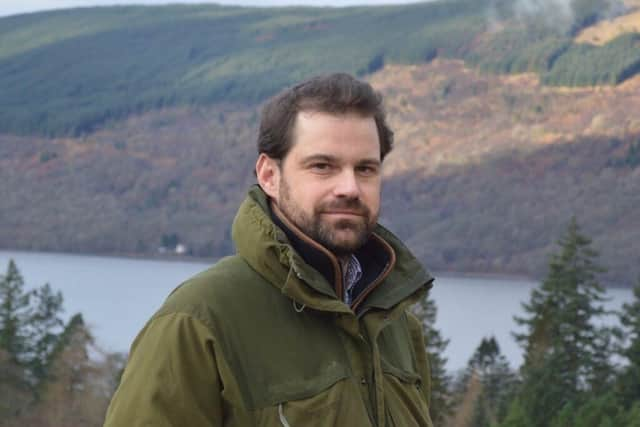We need to challenge the assumption that fewer deer means more trees - Tom Turnbull
As a backdrop there’s the perhaps simplistic and poorly evidenced assumption that fewer deer will result automatically in more trees and an environment better equipped to combat climate change. But is this true – and at what expense?
Red deer have long been a part of the cultural history of our upland hills and glens. They are vital to many remote rural communities providing a valuable opportunity for young people to live and work locally. Deer management is challenging, carried out often in winter weather and over difficult terrain, yet most employed in it care passionately about the deer.
Advertisement
Hide AdAdvertisement
Hide AdHow our landscape is managed is also viewed as a key driver in combating species loss and climate change. Much has been documented about the detrimental ecological impacts of deer on biodiversity and carbon-rich habitats like peatlands and woodlands, which places deer managers in a unique but challenging position to help.


Hard work is underway to restore peatlands and establish trees whilst reducing deer numbers, although recognition for these efforts is hard to come by – commitment that has seen deer numbers as verified by Government data drop over the last 25 years in the Highlands.
But reality is nuanced. Nature’s response to fewer deer may prove disappointing to those expecting to see Scotland’s glens suddenly flourishing in dense, native woodland.
For those delivering Scottish Government targets past experience shows that simply reducing herbivore numbers, including sheep, to very low levels (or excluding them from an area) cannot guarantee woodland regeneration. Without a seed source trees will struggle to regenerate and, even if they do, progress may be slow.
For our wetter, nutrient-poor west coast ecosystems some expect heather and blaeberry to recover and woodland to appear when herbivore numbers are reduced significantly. However, results are often disappointing with large areas overrun with dominant, unproductive Molinia grassland with which other species cannot compete. This, coupled with reductions in a deer population that some have managed for generations, can be hard to swallow.
ADMG, whilst challenging the generalization that fewer deer automatically means more trees everywhere, would welcome a wider conversation about what happens when herbivore numbers are reduced but habitat fails to respond as expected, and our approach needs to be targeted and adaptive. With woodland planting and agri-environmental schemes in development, and the experience of current and past schemes and incentives difficult to access, government also needs flexibility in its approach to biodiversity and climate gains. We must understand where swift progress can be made, or marginal gains enhanced and where we may have to intervene with other management tools such as cattle-grazing.
Some habitats will respond slowly, or in unexpected ways and the harsh environment in which the deer live, and deer managers work, could take many years to respond to change. ADMG fully supports the need for biodiversity improvement and addressing the climate crisis but expectations must be managed.
We should talk now, before disappointment over results at the highest level means that deer continue to be vilified when they have little or no bearing on nature’s response. We must also take the deer managers - the very people expected to deliver these targets - with us.
Tom Turnbull, Chairman, the Association of Deer Management Groups
Comments
Want to join the conversation? Please or to comment on this article.